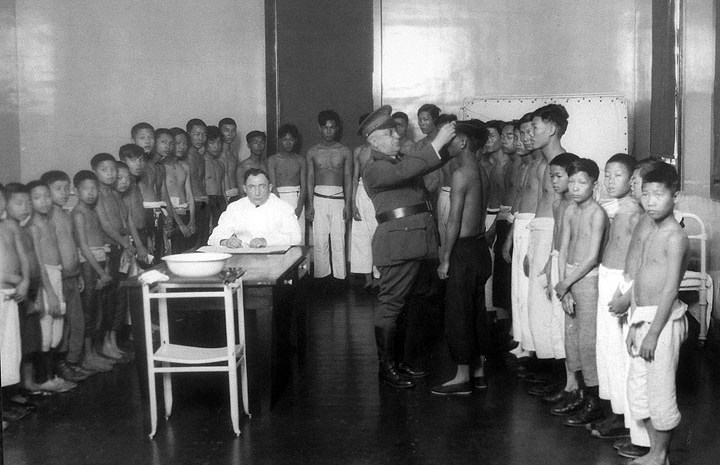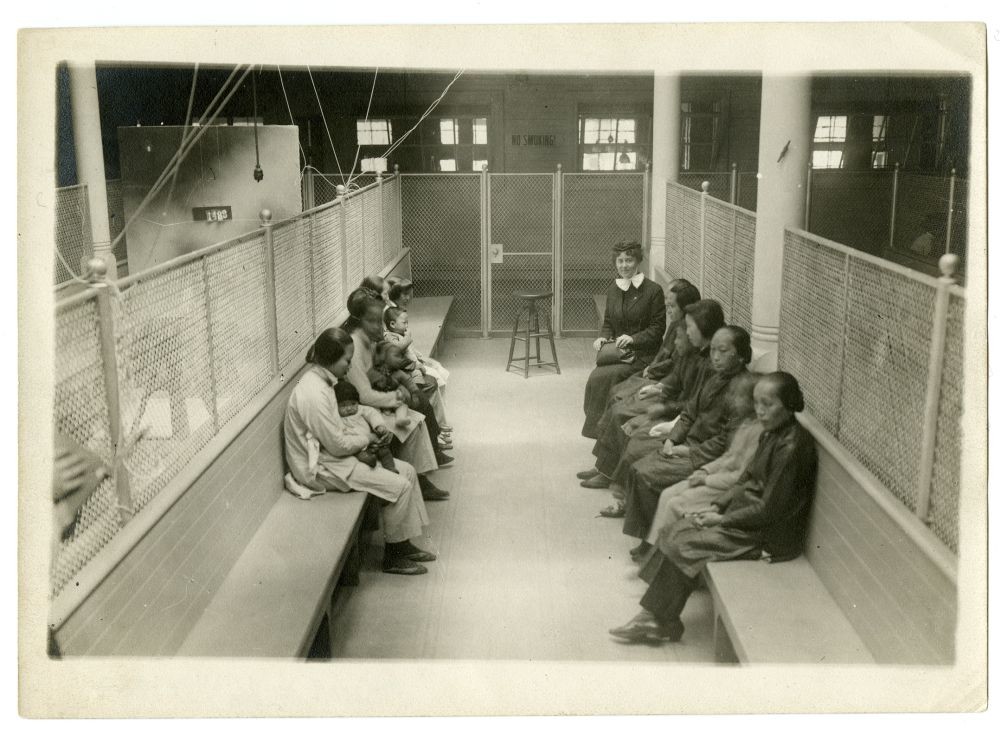From 1910-1940, California’s Angel Island immigration center processed Chinese immigrants trying to enter the U.S. during the period of the Chinese Exclusion Act. Due to the Act, Chinese immigrants had to rely on existing family ties to Chinese Americans, many of which were fabricated. These immigrants became known as “paper sons” and “paper daughters,” and were subject to intense interrogation, lasting as long as 2 years. The center’s goal was to deport as many Chinese immigrants as possible. Under the justification of determining legitimacy, the interrogations were specific to the point where even real family of Chinese Americans often failed—questions included village of origin, how many walls existed around that village, how many pigs their neighbors owned, etc. Throughout the entire months- to years-long process, immigrants were locked in the living facilities, often described as cages. Immigrants were stacked within close quarters of each other in the barracks, and mattresses and pillows were not provided at first because Chinese were supposed to be hardworking and strong. Sons (counted as “men”) were often separated from their mothers and subject to separate interviews. All parties, including the Chinese American citizens, had to have matching interrogation responses in order for the immigrant to be considered for admission.
For perspective, European immigrants during the same period arrived largely through Ellis Island, and were admitted into the U.S. same-day without intense interrogation. Non-Chinese immigrants were also admitted within days of arriving at Angel Island.


